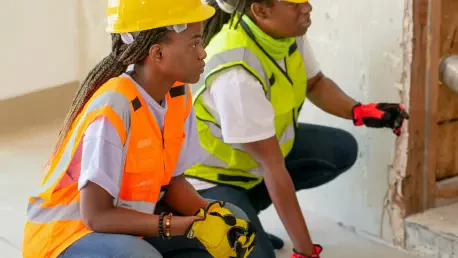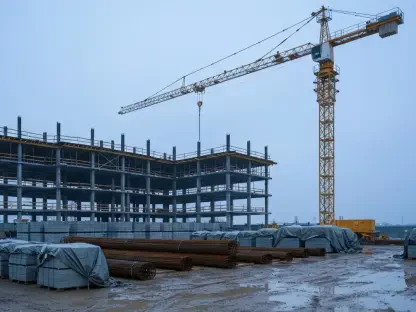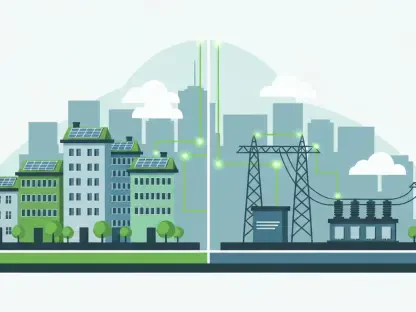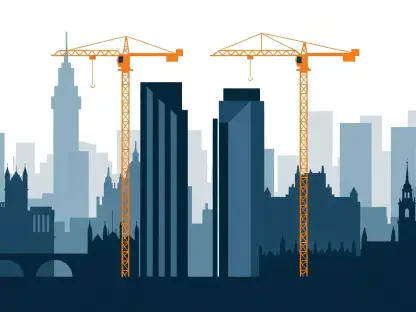Australian Standards are fundamental in safeguarding the quality and safety of construction projects across the nation, yet accessing these standards has long been hindered by financial and logistical barriers. Recently, a collective of seven pivotal organizations, including Standards Australia, the Australian Sustainable Built Environment Council (ASBEC), Master Builders Australia, and the Housing Industry Association (HIA), have taken steps to address these obstacles. Their joint effort seeks to cultivate an environment where Australian Standards can be accessed with ease, fostering a constructive ecosystem that enhances safety and productivity in the construction sector. The current model presents a significant challenge, whereby these standards are locked behind a paywall, making them expensive and difficult to utilize, thus affecting the broader industry’s timely delivery of necessary infrastructure.
Collaboration among industry stakeholders has underscored the essential need to break down these financial barriers and streamline access to standards. Such a transformation is poised to significantly impact workforce productivity, compliance, and the delivery of infrastructure crucial for Australia’s transition to net zero. Notably, this commitment reflects a shared vision between industry and government representatives to increase housing supply, elevate construction quality, and facilitate an efficient path to achieving net zero emissions. Central to this vision is the proposal of a national standards access model, intended to enhance both compliance tools and the ability to innovate. By empowering different industry players and improving standards access, this model aims to cultivate higher levels of productivity and compliance across the sector.
Addressing Barriers to Standards Access
The ongoing issues surrounding the fragmented and costly access to Australian Standards present a myriad of challenges that the construction industry must overcome to move forward effectively. A lack of seamless access not only hinders individual workforce efforts but also diminishes the timely delivery and quality of housing infrastructure. This inefficiency contradicts the broader intention of preparing for Australia’s ambitious net-zero emission goals. It is widely acknowledged that excessive regulatory hurdles and upfront costs associated with standards can stunt technological advancements within the sector. Removing these barriers can therefore facilitate a more cohesive and integrated regulatory framework—one that allows for the incorporation of emerging technologies like AI.
Significant discourse has emerged around the topic of paywalls, with experts positing that eliminating them could unlock vast deregulation benefits. By fostering a more inclusive approach to access, the construction industry stands to benefit from a comprehensive regulatory system. Standards Australia’s CEO, Rod Balding, and ASBEC’s CEO, Alison Scotland have both pointed to the potential upsides associated with shifting toward greater accessibility. By easing entry costs and streamlining red tape, the move is expected to enhance the sector’s overall readiness for future technological interplays and make strides toward a sustainable construction landscape.
Pathway to a Unified Approach
With a unified proposal to the government, the coalition of organizations is proactively charting a pathway to improve access to the standards essential for uplifting the construction sector. This collaborative effort is driven by the motivation to develop a model that fosters innovation, minimizes unnecessary bureaucracy, and aligns with evolving industry needs. Improving access is poised to propel the industry toward a more productive and robust future. Furthermore, this initiative encourages the growth of a dedicated workforce equipped to navigate the complexities of construction standards with reduced financial restrictions.
Stakeholders are anticipating that this model could significantly enhance the potential for innovation in compliance systems, which in turn would strengthen the industry’s ability to meet future demands. By focusing on removing financial and bureaucratic challenges, the proposal seeks to create a conducive environment for construction standards to evolve in line with technological advances. As such, the initiative marks a pivotal step toward addressing the nation’s housing and infrastructure challenges by helping the industry to tackle inefficiencies head-on.
Paving the Way Forward
Australian Standards are crucial for ensuring quality and safety in construction projects nationwide. Despite their significance, accessing these standards has historically been impeded by financial and logistical hurdles. Recently, seven key organizations, including Standards Australia, the Australian Sustainable Built Environment Council (ASBEC), and Master Builders Australia, have taken proactive steps to mitigate these barriers. Their collaborative efforts aim to create a framework where Australian Standards are readily available, fostering a productive ecosystem that elevates safety and efficiency in the construction industry. Traditionally, these standards have been restricted by a paywall, rendering them costly and challenging to use, and affecting the timely delivery of infrastructure. Industry collaboration highlights the need to remove these financial obstacles and streamline access, impacting workforce productivity and facilitating Australia’s journey to net zero. This vision proposes a national standards access model to foster compliance and innovation, enhancing productivity and raising housing quality.









